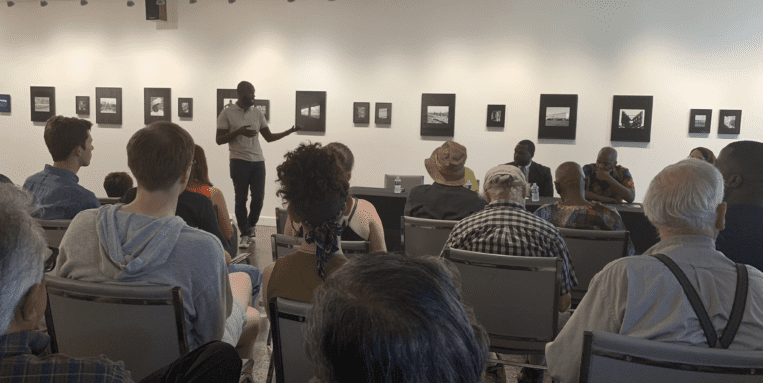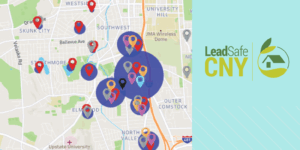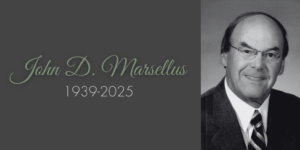Attorney Lanessa Chaplin grew up seeing I-81 every day as a Southside resident of Syracuse, but during her childhood, she wasn’t aware of how it contributed to the generational poverty that surrounded her or the negative psychological, neurological, and respiratory effects that can come with living near the highway. Chaplin, who now serves as Project Counsel for the New York Civil Liberties Union (NYCLU), was born on the Westside, raised on the Southside, and dreamed of becoming an attorney, just like Judge Judy, who she watched on television.
When she read that the NYCLU’s position would involve legal and policy matters that affected communities of color, she knew joining the NYCLU was the right career move.
Chaplin’s position was formed when the NYCLU Central New York Chapter encouraged the state-wide NYCLU to help foster community dialogue around the topic of I-81’s challenges and future opportunities.
“This is the first time that we have been intimately involved in an infrastructure project, largely because we see how it affects the school system and how it contributes to the segregation and lack of resources in schools,” said Chaplin.
Specifically, NYCLU is conducting outreach both in city and suburban neighborhoods to encourage an open dialogue and community conversation around the benefits and challenges of various I-81 replacement options. After ten years of research, the Department of Transportation (DOT) has issued a legally-binding preliminary Draft Environmental Impact Statement (DEIS) with time for communities to comment on their proposal.
Since the structure is in an environmental justice community, which means it is in a neighborhood of persons of color, historically disenfranchised communities and/or low income communities, there is a heightened level of requirements before a decision can be made. These requirements direct federal agencies to identify and address the disproportionately high and adverse human health or environmental effects of their actions on minority and low-income populations. They also help to ensure that a suitable balance of social, economic and environmental factors is incorporated into the planning and decision-making processes of state, regional and local agencies. Basically, these requirements provide Syracuse with an opportunity to enhance its neighborhoods and the lives of city residents.
With the help of a grant from the Community Foundation, Lanessa Chaplin and her team of ‘Credible Messengers’ have activated several modes of community engagement around I-81, including a ‘listening tour’, door-to-door canvassing, Tuesday workshops (held weekly), panels at ArtRage Gallery and Henninger High School, and the design of postcards for sending comments to the DOT regarding the DEIS. Chaplin commented: “All of the work that I am able to do is because of the Community Foundation.”
The postcards are easy to fill out, brightly colored, and will be legally-binding documents when in the hands of the DOT. Each postcard has room for three stickers, which allow the sender to state their top priorities including: “Air and noise pollution must be mitigated at Dr. King School,” and “Cumulative exposure analysis must occur in environmental justice communities.” The postcards are a tangible, hands-on effort to formulate comments about what the community wants. Chaplin and NYCLU hope to create a platform in which every voice is heard.
“We don’t want to speak for the community. We want the community to speak for themselves,” she said.









